Season-smart ingredients are essential for your solar cooking success because they naturally align with peak sun patterns and prime UV hours. You'll get bolder flavors and better nutritional value when you choose produce at its natural harvest time. Local, seasonal ingredients cook more efficiently in solar ovens since they're fresher and retain moisture better during the cooking process. During winter months, you'll want to select ingredients that work well with shorter cooking windows, while summer allows for longer, unattended cooking periods. By matching your ingredients to nature's calendar, you'll reveal the full potential of sun-based cooking techniques.
Nature's Calendar in Solar Cooking
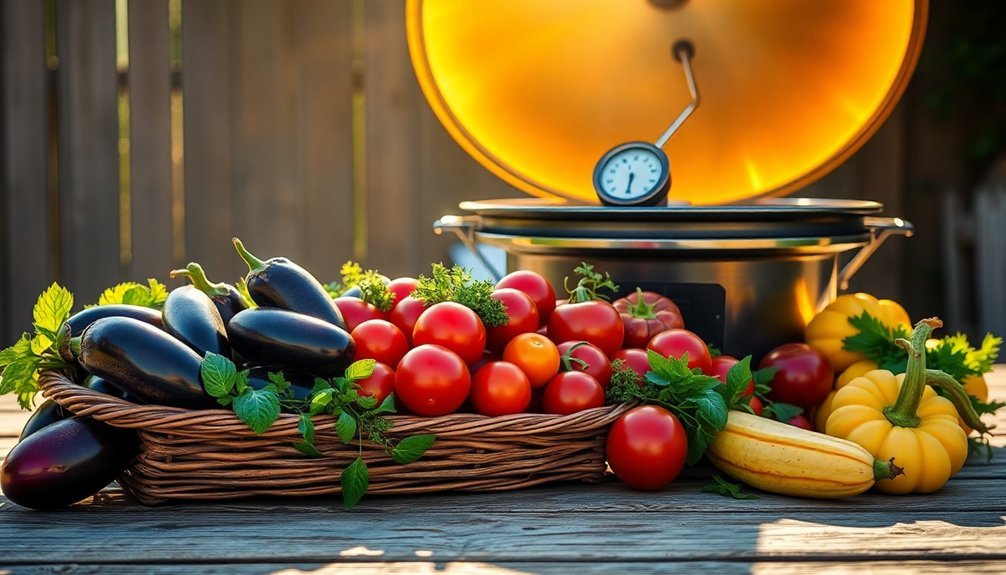
When you harness the sun's energy for cooking, understanding nature's daily and seasonal rhythms becomes essential.
You'll find your most productive cooking hours between 11:00 am and 3:00 pm when the sun's directly overhead, making it perfect for baking and browning.
You'll need to adapt your cooking strategy as seasons change. During winter months, you're working with a shorter cooking window and lower UV intensity, requiring more frequent adjustments to your solar cooker's position. Using dark-colored cookware will help maximize heat absorption during these challenging conditions.
Summer offers you longer, more consistent cooking periods with less need for monitoring. Even in challenging climates like coastal areas, you can still achieve great results by planning ahead.
Remember to align your cooker's angle with the sun's position based on your latitude – it's key to maximizing your cooking efficiency throughout the year.
Peak Season Produce Selection
Just as the sun guides your solar cooking schedule, nature's calendar directs your produce selection. When you choose peak-season produce, you'll experience bolder flavors and enhanced nutritional value from fruits and vegetables that have ripened naturally in local fields.
You'll find that seasonal ingredients aren't only more affordable due to abundant supply but also easier to source at farmer's markets and local farms. By selecting produce at its peak, you're supporting sustainable farming practices and reducing the environmental impact from long-distance transportation and storage. For optimal results, plan your solar cooking between 11:00 AM and 3:00 PM when UV exposure is highest.
Plus, you'll discover that in-season produce pairs naturally with other current harvests, creating harmonious flavor combinations. To make the most of nature's offerings, track seasonal availability through online resources or local harvest calendars, and let each season inspire your culinary creativity.
Adapting Recipes for Weather Changes
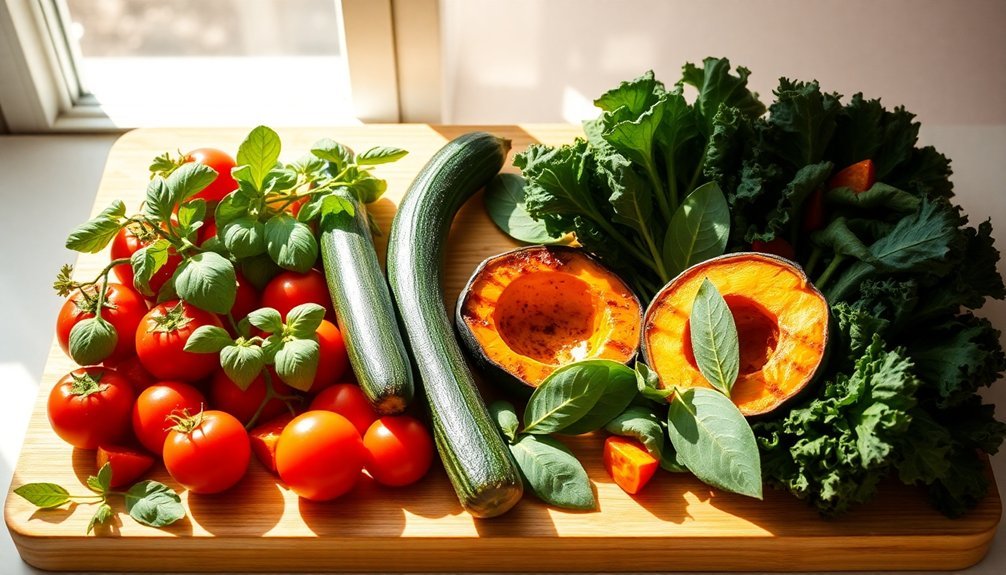
Understanding how weather affects your cooking can make the difference between culinary success and disappointment. You'll need to adjust your recipes based on altitude, humidity, temperature, and available sunlight for ideal results.
| Condition | Required Adjustment |
|---|---|
| High Altitude | Increase bake time, decrease leavening agents |
| High Humidity | Add bake time, reduce liquid ingredients |
| Warm Temperature | Chill ingredients, prepare quickly |
| Limited Sunlight | Double cooking time, focus on peak hours |
For solar cooking success, you'll want to plan around the sun's peak hours between 11:00 am and 3:00 pm. When humidity's high, reduce your liquid ingredients and expect longer bake times. At higher altitudes, you'll need more time and less leavening. In warm weather, keep your ingredients cool and work efficiently to prevent premature melting. Since water evaporates more quickly at high elevations, you may need to increase liquid ingredients to maintain proper moisture levels.
Local Ingredients for Solar Success
Your local farmers' market offers the perfect ingredients for successful solar cooking, with fresh produce that's perfectly suited to harvest-to-heat preparation.
You'll find that market-fresh vegetables and fruits cook beautifully in your solar oven, requiring minimal prep while retaining maximum nutrients.
Harvest-to-Heat Cooking Tips
While solar cooking requires careful timing and positioning, selecting the right local ingredients can greatly enhance your culinary success.
Start with dry-farmed root vegetables, which retain heat well and cook evenly in your solar oven. You'll find that locally sourced, hormone-free chicken pairs perfectly with these hearty roots.
Add fresh herbs like rosemary and thyme from nearby gardens to infuse your dishes with aromatics during the peak cooking hours of 11:00 am to 3:00 pm.
For best results, pre-heat your oven early and position it to maximize sun exposure. Don't forget to include locally gleaned lemons for brightness and seasonal greens for side salads.
Using a dark cooking vessel, such as a cast iron Dutch oven, will help maintain consistent temperatures throughout your cooking process.
Fresh Markets Meet Sun
Three key benefits emerge when combining local market ingredients with solar cooking: enhanced flavor, environmental sustainability, and community support.
You'll find that locally sourced meats, like hormone-free chicken from nearby farms, and fresh-picked root vegetables retain more nutrients when cooked using solar power.
The gentle cooking process at temperatures below 120°C preserves vitamins and minerals while bringing out natural flavors, especially in dry-farmed potatoes and Meyer lemons.
Storage Solutions Between Growing Seasons
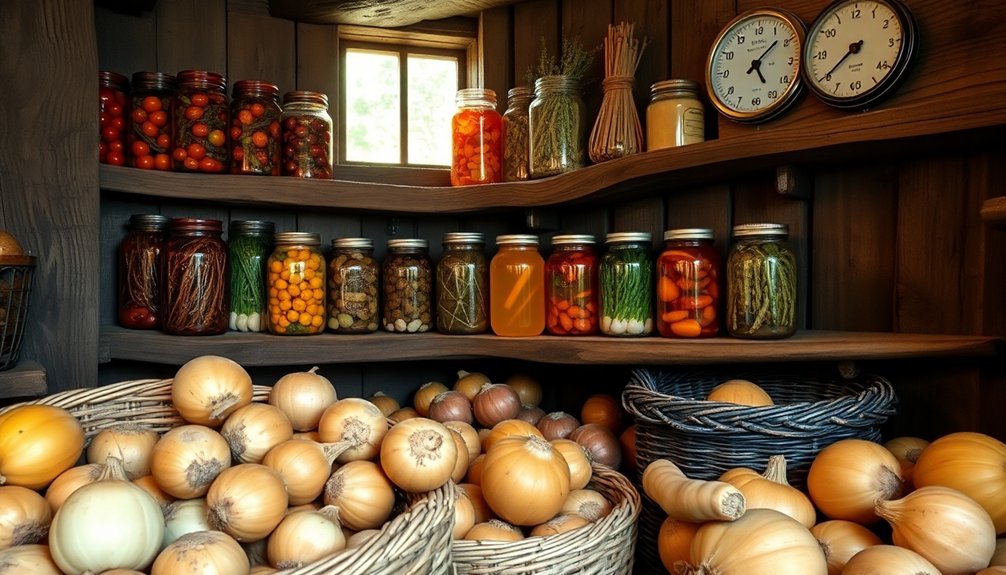
Since fresh ingredients aren't always available year-round, proper storage solutions become essential for maintaining a well-stocked kitchen between growing seasons.
You'll want to match each ingredient with its ideal storage container and location. Use glass jars for dried goods, vacuum-sealed bags for freezer items, and mesh bags for vegetables that need to breathe like onions and potatoes.
Your pantry's cool, dark environment works perfectly for canned goods, while your refrigerator handles short-term storage of fresh produce.
For long-term preservation, you can freeze, can, or dry your seasonal bounty. Remember to keep ethylene-producing foods separate from sensitive ones to prevent premature spoilage.
If you're lucky enough to have a root cellar, you'll find it's ideal for storing root vegetables and winter squash in its naturally humid environment.
Maximizing Flavor With Seasonal Pairings
Understanding seasonal ingredients and their natural flavor affinities can transform your cooking from good to exceptional.
You'll find that each season offers distinct pairing opportunities: fall's Brussels sprouts and squash work beautifully with hoisin sauce, while winter's hearty root vegetables complement chili garlic sauce's warmth.
In spring, you can enhance delicate greens like arugula and bok choy with Panda Brand Cooking Soy Sauce, creating light, flavorful dishes.
Summer brings opportunities to pair fresh berries and seafood with bright citrus-based sauces.
Year-Round Solar Kitchen Planning
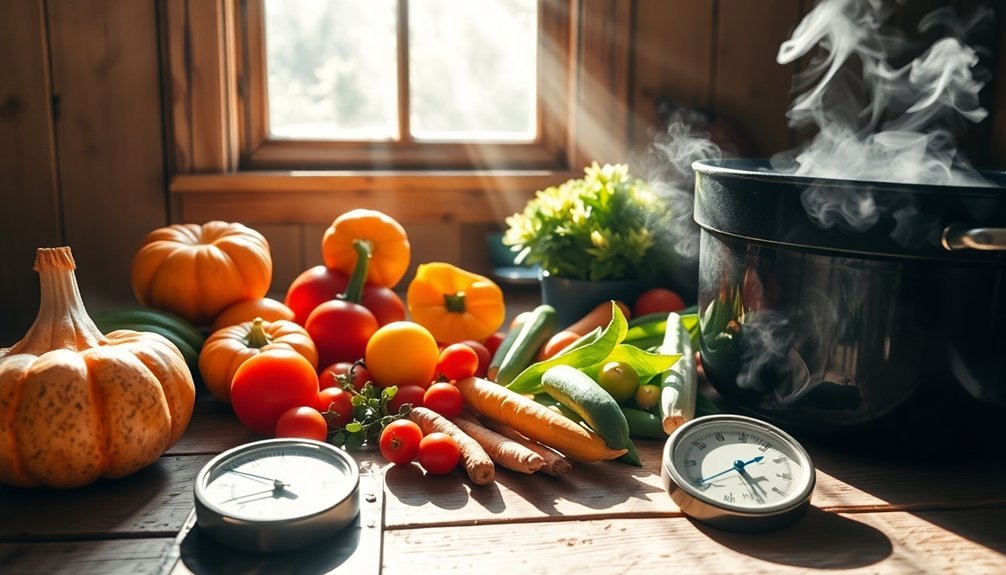
While mastering seasonal ingredients enhances flavor, planning a year-round solar kitchen takes your sustainable cooking to the next level.
You'll need to adapt your cooking schedule to peak sun hours between 11:00 am and 3:00 pm, with special attention to shorter winter days.
Position your solar kitchen on a South to South Westerly aspect if you're in the northern hemisphere, ensuring your space extends beyond roof coverage for maximum sunlight exposure.
You'll want to integrate various technologies to maintain cooking flexibility year-round. Consider combining Scheffler mirrors and solar box-cookers with biogas digesters for cloudy days.
During winter months, you'll need to track the sun more carefully and possibly break meals into stages over multiple days.
Summer offers more flexibility, allowing longer unattended cooking periods and extended warming times until 4:00 pm.
Frequently Asked Questions
Can Solar Cooking Affect the Vitamin Content of Seasonal Vegetables?
Yes, you'll notice solar cooking can reduce vitamin content, especially vitamin C, in seasonal vegetables. Your longer cooking times will cause greater losses, but you can minimize this by using covered pans and lower temperatures.
How Do Different Colored Cooking Vessels Impact Seasonal Ingredient Cooking Times?
You'll find dark-colored vessels cook your seasonal ingredients faster than light ones, as they absorb more solar radiation. Black pots can reduce cooking times by up to 25% compared to lighter alternatives.
What Emergency Backup Methods Work Best When Clouds Interrupt Solar Cooking?
You'll want to keep a portable propane stove or indoor electric hot plate ready. They're quick to set up when clouds roll in and can seamlessly continue cooking your partially prepared meals.
Which Seasonal Ingredients Should Never Be Combined in Solar Cooking?
You shouldn't mix high-water vegetables with dry grains, raw meats with delicate produce, or acidic ingredients with dairy. These combinations can cause uneven cooking, food safety issues, and texture problems in solar cooking.
Does Altitude Affect Seasonal Ingredient Selection for Solar Cooking Success?
Yes, you'll need to adjust your ingredient choices at higher altitudes since cooking times vary. You should select faster-cooking ingredients in winter and can use longer-cooking items during summer's intense solar exposure.
In Summary
You'll find that cooking with seasonal ingredients transforms your solar cooking experience. By aligning your menu with nature's calendar and local harvests, you'll achieve better results and richer flavors. Remember to adapt your techniques as weather patterns shift, store peak-season items properly, and plan your solar kitchen schedule year-round. When you work in harmony with the seasons, you're making the most of sun-powered cooking.

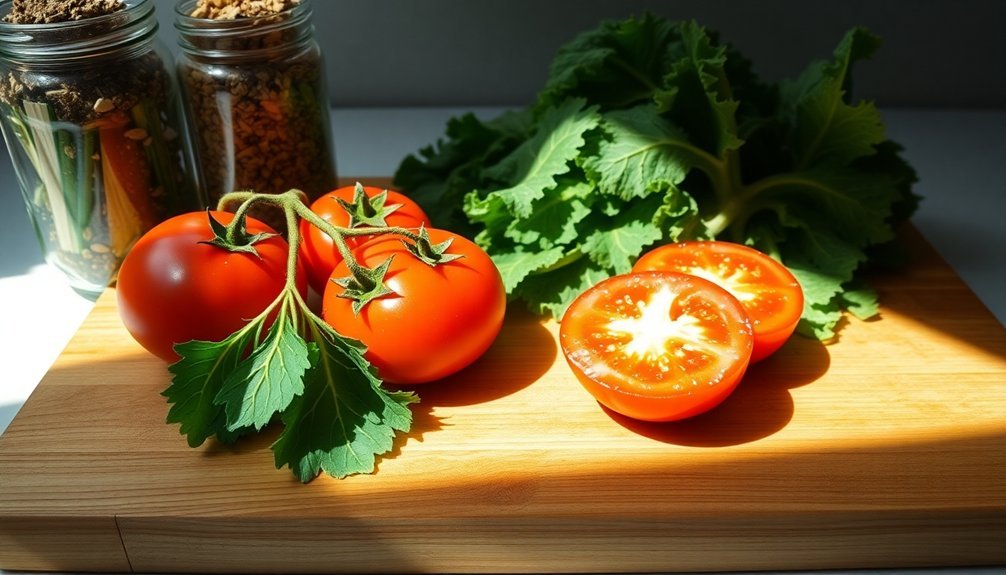
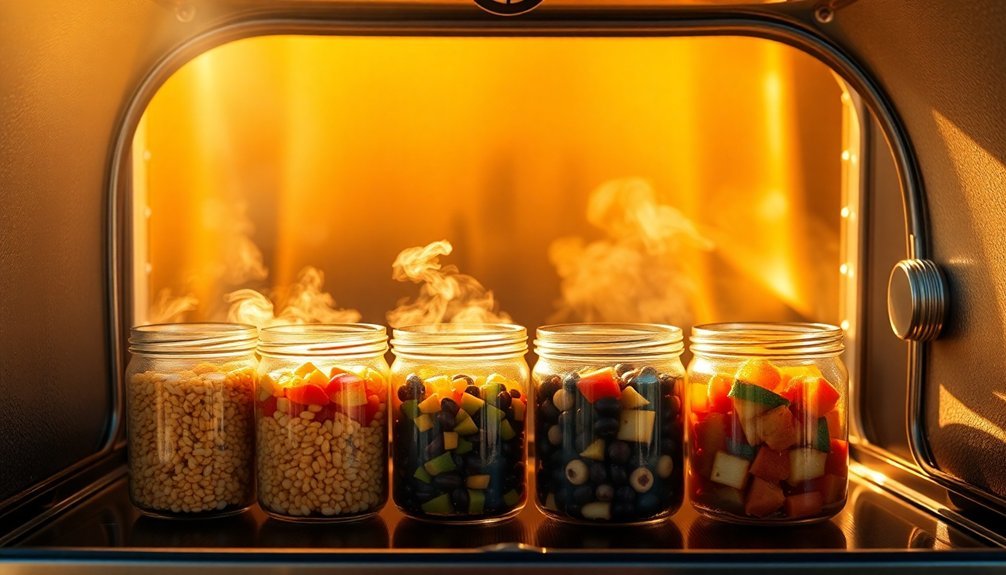


Leave a Reply